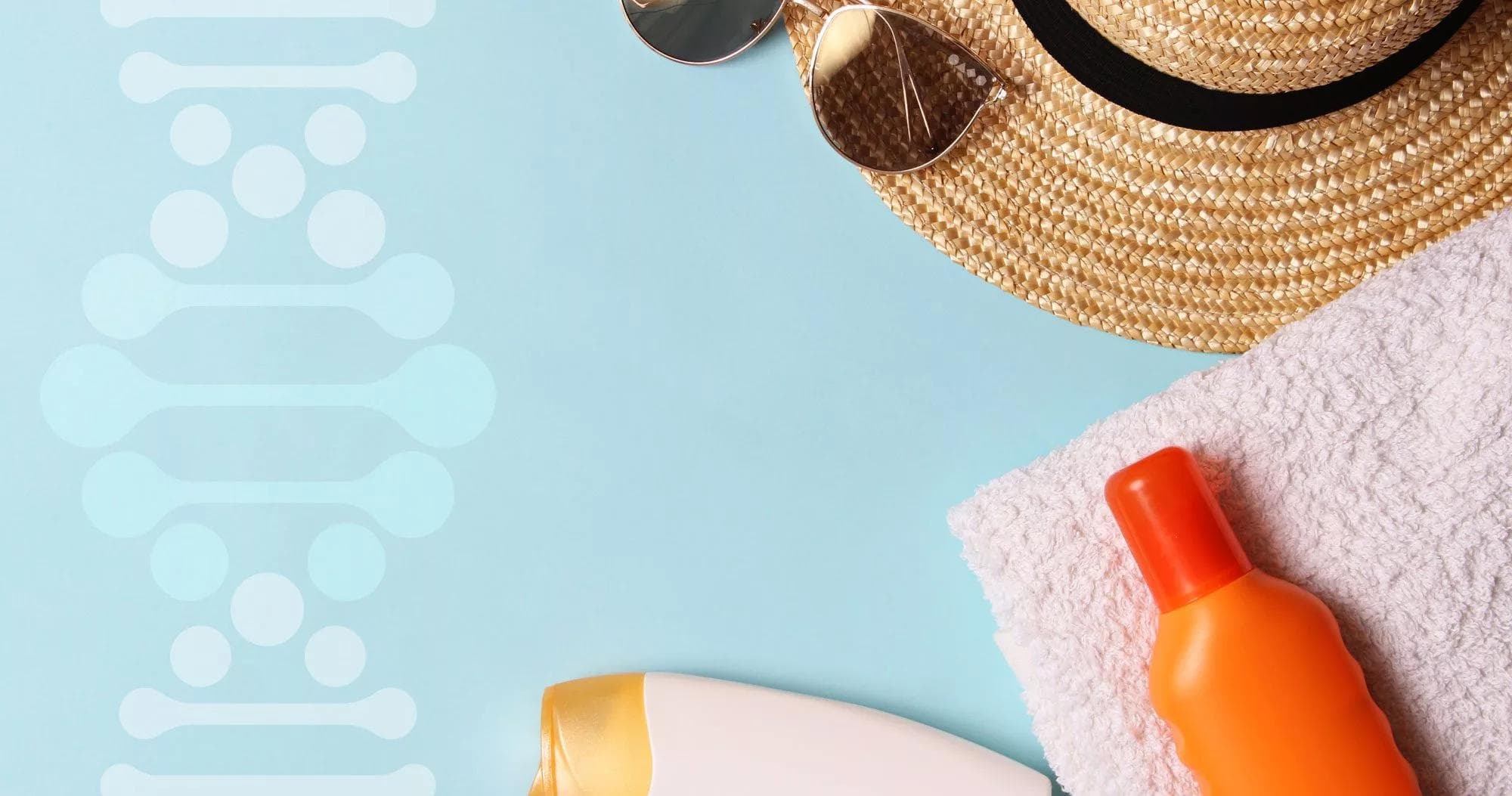Summer: The season for sun and DNA repair

The season of graduations, backyard BBQs, and pool parties is upon us, which means a lot of people will be in the sun. Solar rays bathe us in the summer months—one of the big perks of the season—but too much sunlight comes with costs. When you talk about sunlight and the sunburns that could occur, it’s worth understanding how sun exposure relates to DNA damage and skin cancer risks. As you prepare for your summer festivities, what do you need to know about sunlight and your DNA?
Aside from visible light, sunlight contains ultraviolet (UV) waves of energy, which have a wide range of effects on the body. Generally, there are three different categories of UV waves that are defined by the amount of energy they carry. The most energetic are UV-C waves, followed by UV-B and then UV-A. The higher the energy, the more potentially harmful it is. Fortunately, the vast majority of UV-C light is absorbed by our atmosphere and very rarely makes it to Earth’s surface. In contrast, UV-B and UV-A light does reach us—and it’s these rays that have the potential to cause harm1.
While no one likes the pain of a sunburn, the biggest concern with sun exposure is the threat of skin cancer. The term “skin cancer” actually refers to a group of different cancers that all originate in your body’s largest organ, skin. Melanoma is the most famous of these, but it’s actually less common than the other two major forms of skin cancer—Basal Cell Carcinoma (BCC) and Squamous Cell Carcinoma (SCC)—which together account for 95% of skin cancer cases in the United States2. One of the many important differences between these cancers is that BCC and SCC are significantly less lethal than melanoma. The risk of developing all three types of skin cancer increases with exposure to UV light (often from the sun, but also from artificial sources like tanning beds). This is thought to be the result of multiple factors including the effects of UV light on DNA1,2.
Is higher SPF better?
If you’re prone to sunburns, you’ll likely be turning to high SPF sunscreens for protection. SPF, or sun protection factor, is a measure of how effectively the sunscreen blocks UV-B radiation. Approximately five times as much UV-B light will get past the skin in an SPF 10 solution compared to an SPF 50 solution. Thus far, evidence suggests that higher SPF does provide better protection, but remember to reapply fresh sunscreen periodically according to the instructions on the product.3
When UV-B waves collide with DNA, they transfer that energy to the DNA and can cause multiple forms of damage. A common type of damage is the formation of abnormal physical links between DNA bases. These links distort the DNA structure and may eventually lead to changes in the DNA sequence if they are not repaired correctly. However, life on Earth evolved in the presence of sunlight, which means we have mechanisms to detect and repair this damage. DNA repair proteins like NBS1 work together in a coordinated effort to repair the UV-induced damages and maintain its integrity. While these repair proteins are extremely effective, some damages lead to changes in the DNA sequence if the damage is not repaired quickly enough, or correctly. Most of the time these changes are harmless, but occasionally they disrupt the function of an important gene. If this happens to enough important genes in a cell, it can begin to behave abnormally and give rise to cancer1-3.
Does this mean you’ll automatically get cancer if you go out into the sun? No—your body is very well equipped to handle the damaging effects of sunlight, but too much sun exposure (i.e., enough to give you bad sunburns) does increase your risk. Fortunately, there are ways to reduce this risk by wearing protective clothing and repeatedly applying broad-spectrum, high-SPF sunscreens to sun-exposed areas. These sunscreens are designed to filter out some of the UV light and may decrease the amount of DNA damage you experience while out and about. So as you gear up for some summer fun, remember to enjoy the sun responsibly and help your body protect its DNA1,3,4.
1Rastogi, Rajesh P. et al. “Molecular Mechanisms of Ultraviolet Radiation-Induced DNA Damage and Repair.” Journal of Nucleic Acids 2010 (2010): 592980. PMC. Web. 22 May 2018.
2Craig, Sarah, et al. “Ultraviolet Light and Melanoma.” Freshwater Biology, Wiley/Blackwell (10.1111), 5 Mar. 2018, onlinelibrary.wiley.com/doi/epdf/10.1002/path.5039.
3Osterwalder, U., and B. Herzog. “Sun Protection Factors: World Wide Confusion.” British Journal of Dermatology, vol. 161, 2009, pp. 13–24., doi:10.1111/j.1365-2133.2009.09506.x.
4Olsen, Catherine M., et al. “Prevention of DNA Damage in Human Skin by Topical Sunscreens.” Freshwater Biology, Wiley/Blackwell (10.1111), 2 Mar. 2017, onlinelibrary.wiley.com/doi/abs/10.1111/phpp.12298.